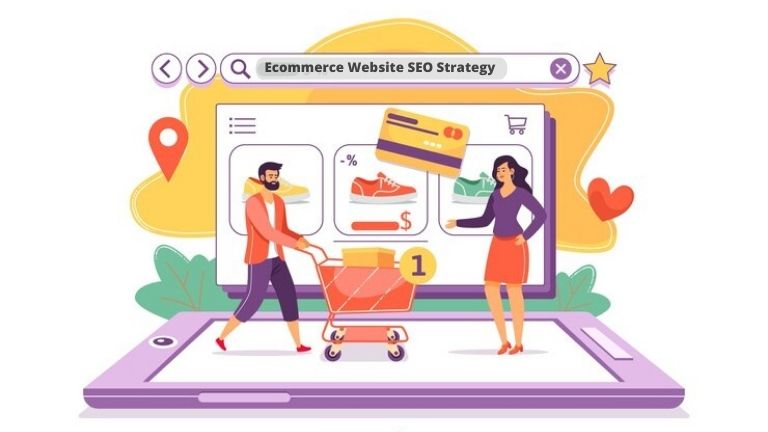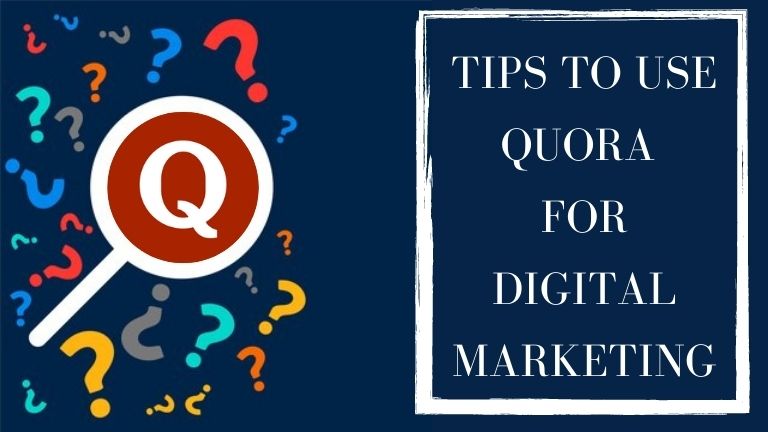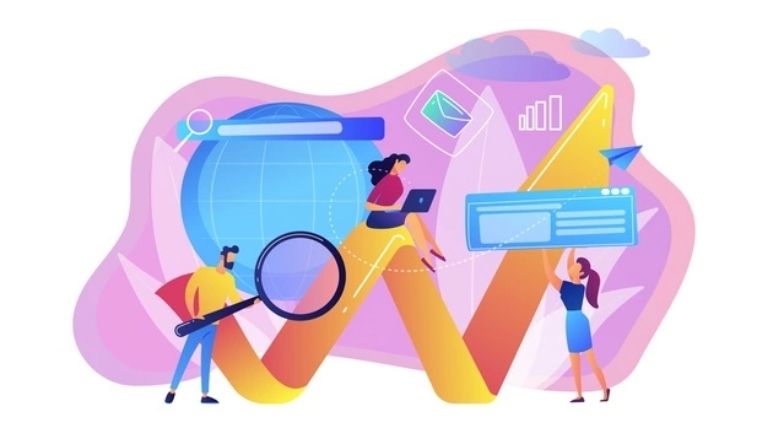SEO Tips for E-commerce website in 2022
Establishing an E-commerce website could be a lucrative venture, but in hopes of selling your goods and accessories, you must first attract visitors to your website. Search engine optimization is an excellent strategy to enhance website traffic and revenue. This is a process that helps your website rank higher in search engines, resulting in more visitors and exposure for your website. This is significant since Google searches account for nearly 80% of all e-commerce activity. That’s why we have created tips and tricks to improve your website ranking but before that, let’s look at what exactly is E-commerce SEO. Definition of Ecommerce SEO Ecommerce SEO is the practice of increasing the visibility of an online business in search engine results. Ecommerce search engine optimisation is a technique that ultimately enhances traffic and conversions by positioning product pages as strong as the top three in search engines. Ecommerce SEO is critical to the profitability of an e-commerce site. That is the most basic definition of e-commerce SEO. However, take into consideration that a great ecommerce SEO plan involves special search engine optimisation tactics tailored to online stores. So, let’s dive right into the SEO Guide for E-Commerce Sites in 2022. Make Your Website Mobile-Friendly Nowadays, you must have a mobile-optimised e-commerce platform. Visitors must be able to visit your online store from their phones quickly, and everything must appear and behave the same way as your actual website in a mobile responsive version. Search engines, meanwhile, would really like to keep their customers satisfied; therefore, they will check for mobile-friendly websites. This lowers bounce rates, makes web pages simpler to explore, and speeds up page loading times, all of which Google favours when prioritising search engine rankings. Don’t Forget About Product Descriptions. Whenever it comes to real content, an e-commerce website is typically restricted, so ensure your descriptions impact. Consider the problem of duplicating the manufacturer’s explanation or taking descriptions from another specific website. Start making sure to produce creative, eye-catching descriptions which will pique your customers’ interest and highlight your offerings while also loading your page with relevant keywords. A successful E-commerce website SEO strategy encompasses this crucial component. When it comes to keywords, strive to avoid keyword crowding. While your product’s primary keywords must occur somewhere within the descriptions, please don’t attempt to deceive the search algorithm by duplicating it. Allow the description to unfold organically rather than using it as a vessel for your keywords. Read about how to increase organic CTR in Google Keyword research in order to enhance SEO Understanding which search engine keywords you would like to appear for is an excellent way to get started. In this manner, you could generate content centred on these keywords with the aim of enhancing your SEO. Keywords will be used across your online store. This can contain things like product information, name, about us page, and blogs. Blogs are an excellent method to offer useful information about your company while also utilising these keywords. Nevertheless, don’t just come up with these words in the heat of a moment. There are several factors to consider. As a result, it is critical to do primary research. Improve internal linking Internal linking is a critical component of E-commerce SEO. Internal linking occurs when you connect to certain other pages on your website. It improves SEO by assisting you in appearing for your selected term and improves customer experience by recommending relevant pages to browsers. However, while doing internal linking, you must be careful not to connect to pointless things. Keyword research should also be conducted so that it assists the visitor in navigating and locating useful resources. You should also read about How to choose SEO package for business Use excellent site architecture. One of the most excellent methods to inform Google that your website is good enough to justify indexing is to develop an internal linking architecture that communicates your themes and subtopics and informs Google’s search crawlers where each of your web pages exists. The framework SEO services provider in India employs to arrange your website is referred to as site architecture. The design of your website relates to the arrangement of pages, divisions, and segments, as well as how visitors and search crawlers browse throughout your pages. Consider your site’s architecture to be a pyramid-like structure, with your site’s theme at the top and sub-topics creating progressively more precise blocks beneath it. It assists Google in understanding the context of various categories and web pages. Take high-quality photographs. This may seem self-evident, but make absolutely sure that your images are appealing. Find a professional photographer and have them enhance your photographs in professional software tools to make your offerings seem attractive. Having said that; be certain that the photos are web-optimised. Every product featured image or even other pictures in your website gallery that is more than 100KB is most likely too massive and can hurt your Ecommerce SEO. Make use of social media Social networking is a very valuable marketing tool. It has the potential to be one of your most important sources of business if used correctly. The existence of your website on social networking sites has an effect on your search engine result pages. For web searches, search engines seek to deliver the most appropriate, high-quality results. They accomplish this in essence by analysing how commonly a URL is being used. Social indicators are one of the parameters that influence this. The likes and comments a URL or site receives on social media are referred to as social indicators. Higher social signals imply better page relevancy; therefore, links that often occur on social media are more likely to perform better in SEO. You could reap the benefits of this by boosting your digital footprint, which will result in more views and interaction with your links. Develop an active social media presence by composing humorous articles, uploading incredible photos, or even sharing internet memes. You can even hire an experienced SEO services provider in






